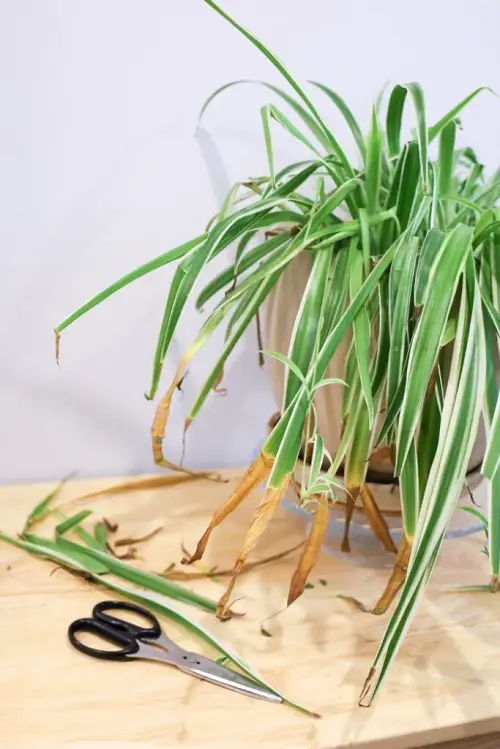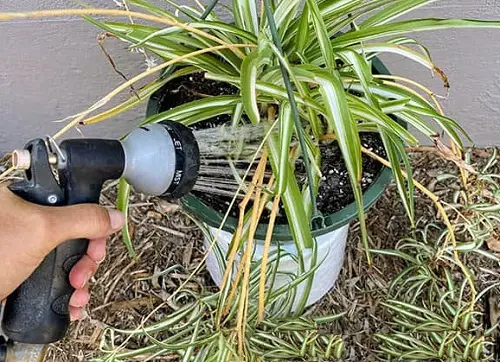Worried about Spider Plant Brown Tips? Here are the top reasons behind it with the solutions to keep them safe and thriving!
Spider Plant Brown Tips – This common problem, while usually a cosmetic concern, can indicate underlying issues that need immediate attention. Our insights will help you restore your spider plant to its lush, vibrant self!
Read about reasons and solutions for brown tips on indoor plants here
Reasons for Spider Plant Brown Tips
1. Overwatering
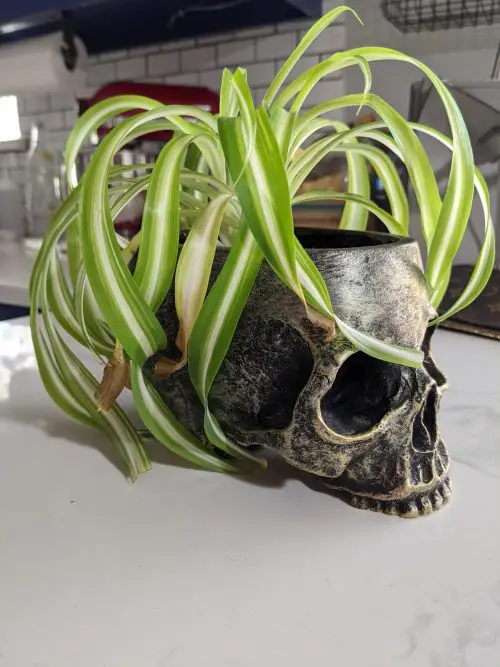
Overwatering is a common cause of brown tips on spider plants. These plants prefer to dry out between waterings. When the soil remains constantly soggy, the roots can’t breathe, leading to stress on the plant, and eventually, the tips of the leaves may turn brown.
Solution: Allow the soil to dry out before watering your spider plant again. Stick your finger about an inch into the soil; it’s time to water if it feels dry.
2. Underwatering
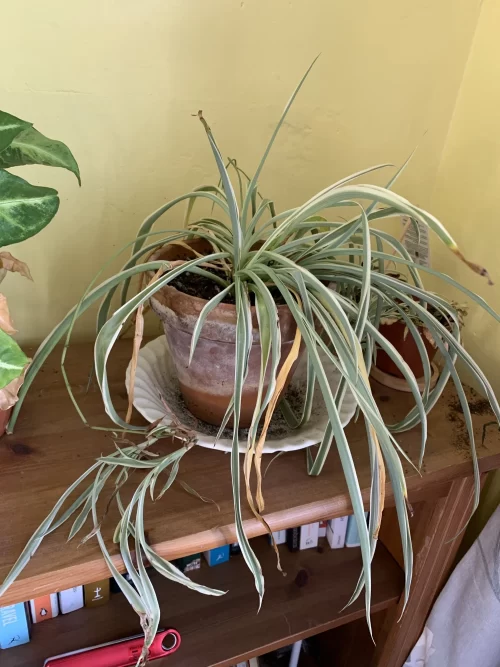
On the other hand, underwatering can also lead to brown tips—spider plants like consistent moisture. The plant will show signs of stress if the soil becomes too dry for extended periods.
Solution: Water your spider plant regularly, but avoid keeping the soil excessively wet. A good rule of thumb is to water when the top inch of soil feels dry.
3. Hard Water
The water quality you use can affect your spider plant’s health. Water with high levels of salts, chlorine, or fluoride can accumulate in the soil, causing the tips of the leaves to turn brown.
Solution: Use filtered water, rainwater, or RO water. Allow tap water to sit for 24 hours to let the chlorine dissipate before using it for your spider plant.
4. Low Humidity
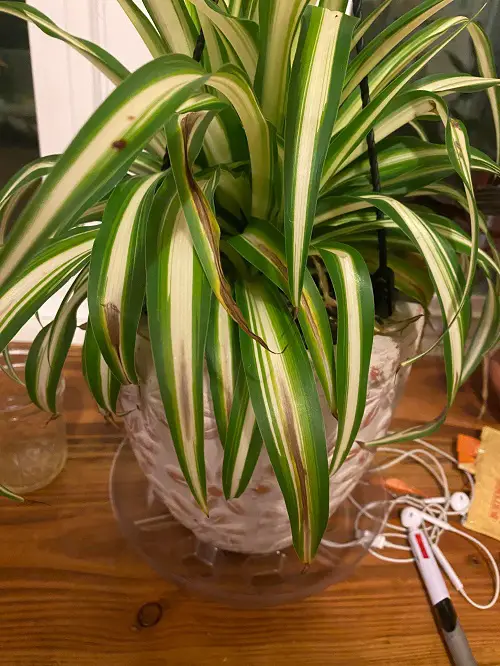
Spider plants thrive in higher-humidity environments. In dry indoor conditions, especially in winter, the plant may not receive enough moisture, leading to brown tips.
Solution: Increase humidity around your spider plant by misting it regularly, placing a tray of water nearby, or using a humidifier.
5. Poor Drainage
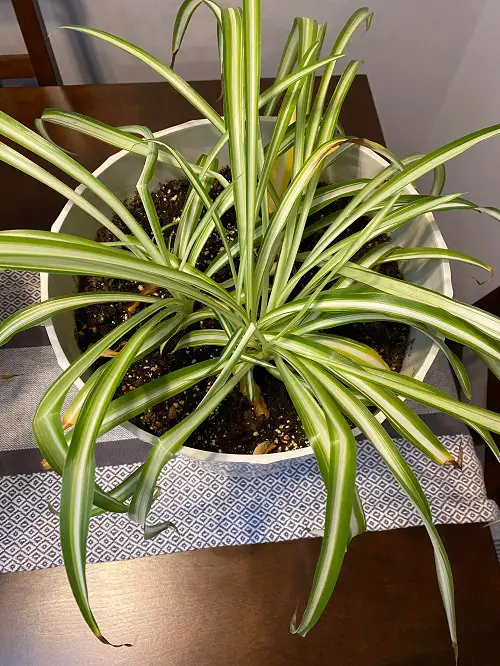
Inadequate drainage in your plant’s pot can lead to waterlogged soil, causing root rot and brown tips on the leaves.
Solution: Ensure that your plant’s pot has drainage holes, and use well-draining potting soil to prevent excess water accumulation.
6. Overfertilizing
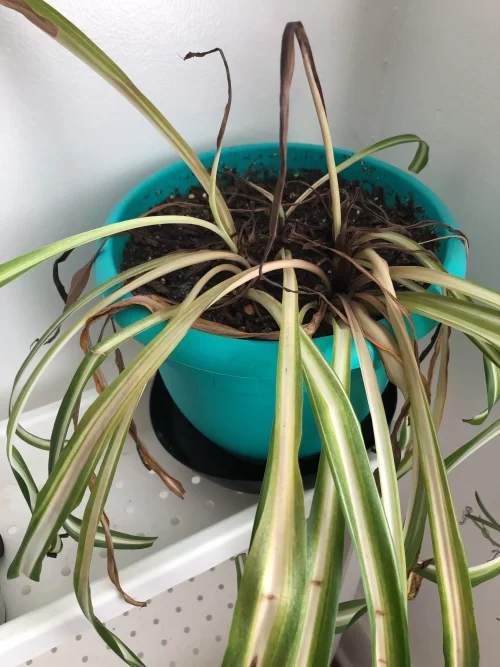
Excessive fertilization can cause salt buildup in the soil, leading to brown tips on your spider plant.
Solution: Fertilize your spider plant sparingly, usually once a month during the growing season (spring and summer), with a balanced, water-soluble fertilizer diluted to half the recommended strength.
7. Inadequate Light
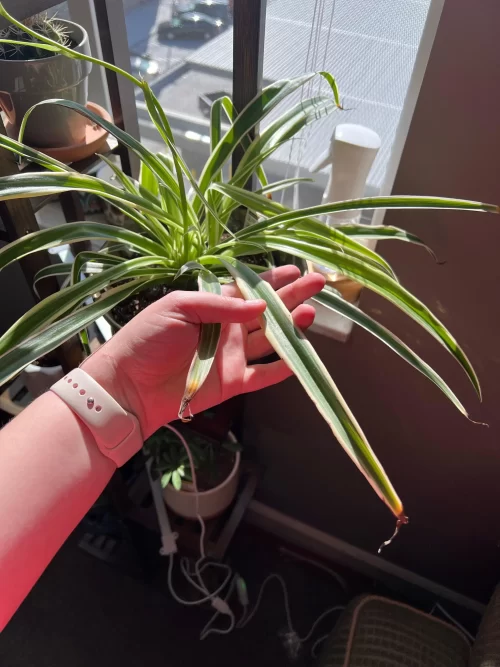
Spider plants need bright, indirect sunlight to thrive. Insufficient light can weaken the plant, making it more susceptible to leaf browning.
Solution: Place your spider plant in a location with bright, indirect sunlight. Avoid direct sunlight, which can scorch the leaves.
8. Root Bound

When a spider plant becomes root-bound, it means its roots have outgrown their pot. As a result, the plant struggles to absorb water and nutrients, leading to stress and brown tips on the leaves.
Solution: To address this issue, carefully remove the plant from its current pot and transplant it into a slightly larger one with fresh potting soil. This gives the roots more room to grow and access the necessary resources.
Want to know why ferns are turning brown and dying? Check this post to save them
9. Pest Infestation
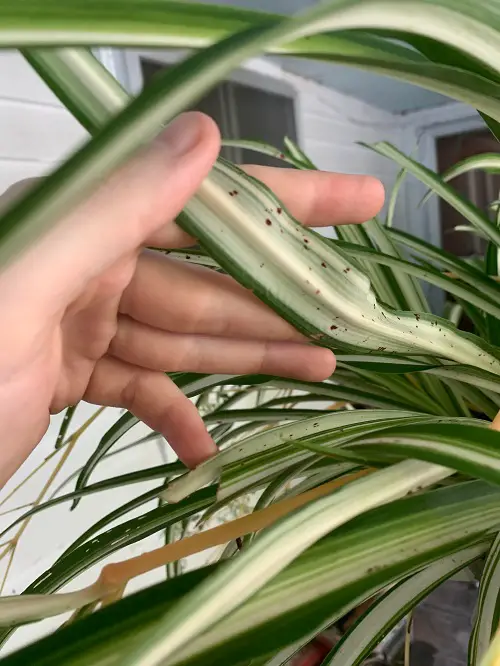
Spider plants are susceptible to pests like spider mites and mealybugs. These insects can suck sap from the leaves, causing discoloration and damage to the plant, resulting in brown tips.
Solution: Regularly inspect your spider plant for signs of pests. If you notice an infestation, take action to remove the pests manually or treat the plant with neem oil or insecticidal soap, following the manufacturer’s instructions.
10. Temperature Stress

Spider plants are sensitive to extreme temperature fluctuations. Exposure to drafts, heaters, or air conditioning vents can stress the plant, causing brown tips on the leaves.
Solution: To prevent temperature-related stress, ensure your spider plant is at a stable room temperature. Avoid positioning it near sources of hot or cold air.
11. Big Pot Size
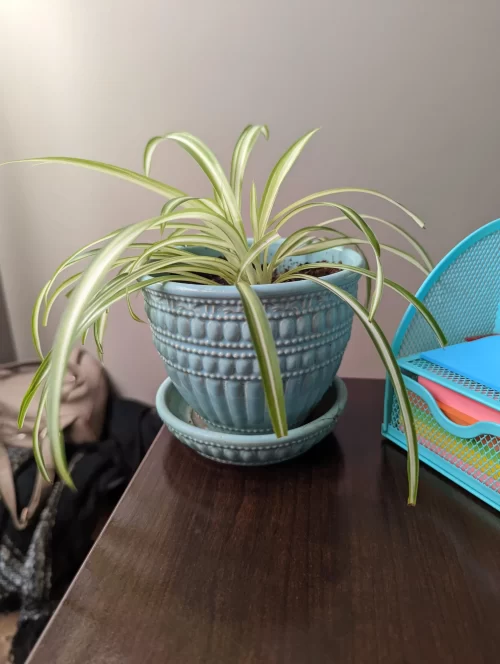
If a spider plant is placed in a pot that is too large, it can retain excess moisture in the soil. This waterlogged condition can stress the plant and lead to brown leaf tips.
Solution: Use a pot that is just large enough to accommodate the root system of your spider plant. This will help prevent excessive moisture retention and promote healthier growth.
Find out why gardenia buds are turning brown and falling off
12. Neglected Pruning
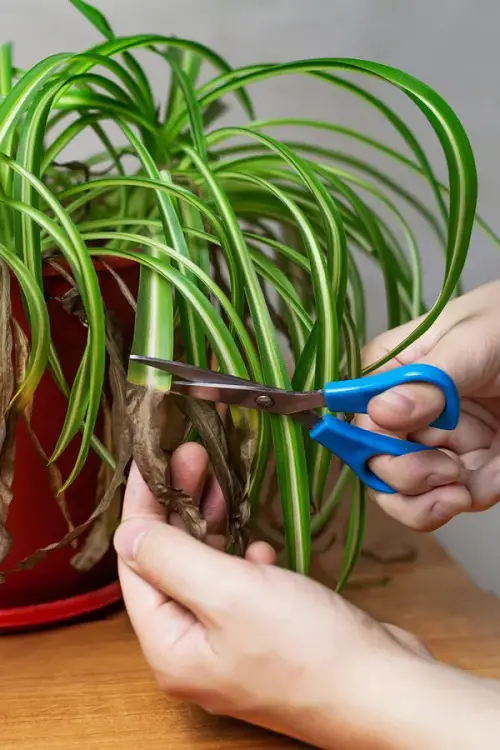
Over time, spider plants may develop brown or yellowing leaf tips, which can detract from their overall appearance. Neglecting to prune these damaged leaves can lead to more widespread browning.
Solution: Regularly trim off any brown or yellowing leaf tips using clean scissors or pruning shears. This not only improves the plant’s aesthetic but also redirects energy to healthier leaves, reducing the occurrence of brown tips.
13. Chemical Exposure
Exposure to cleaning products and aerosols harms your spider plant, resulting in brown leaf tips.
Solution: Keep your spider plant where it won’t be exposed to chemicals or fumes. Ensure it is in a safe and clean environment to prevent chemical-related stress and browning.


